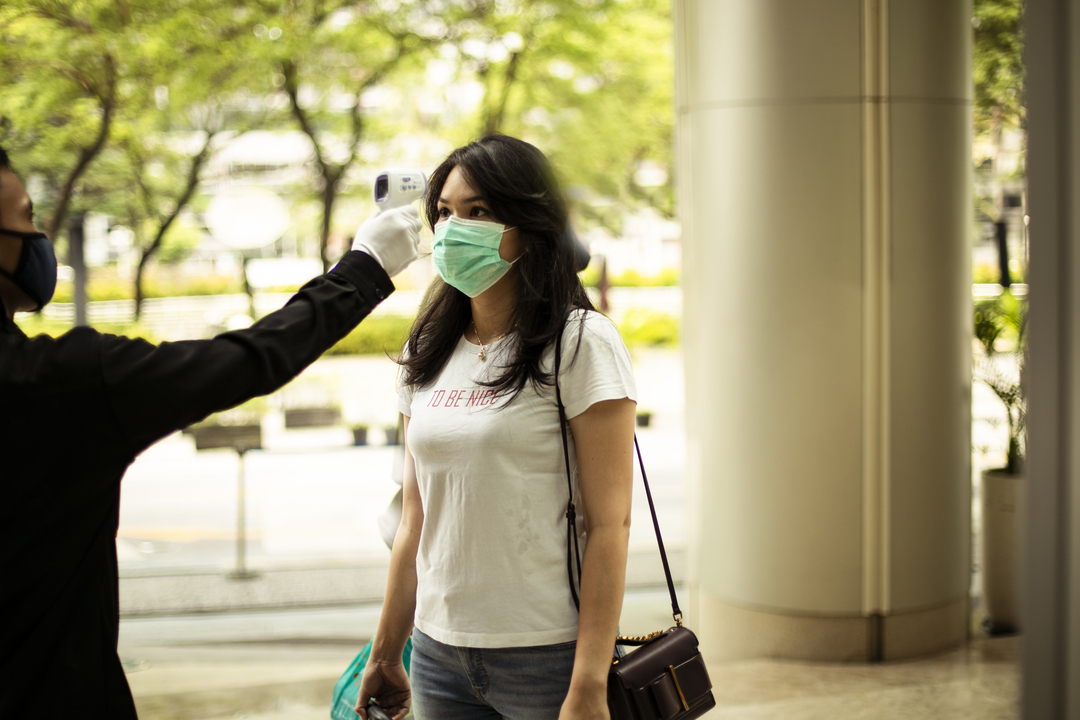Indonesia: Health and social security in a pandemic

Social protection systems around the world are failing at safeguarding the lives and livelihoods of vulnerable groups. Nearly 40 per cent of the world’s population has no health insurance or access to national health services and 100 million people annually fall into poverty because of medical expenses. This implies that many people are lacking the means to seek treatment when they are sick – including when they have highly contagious diseases like COVID-19.
Health System Readiness
Indonesia’s national health insurance programme follows the concept of Universal Health Coverage (UHC) to ensure that people will not be exposed to financial hardship when accessing a health facility. This programme was first implemented in 2014 and aimed to reach 95 per cent of the population by 2019. However, until February 2020 the coverage has so far only reached 82.7 per cent.
Given Indonesia’s geographical and demographic conditions, the government's target to achieve UHC within five years has been very optimistic from the beginning which is reflected in the quality of the programme: fiscal space, capacity of health facilities, doctors and health infrastructure remain challenges yet to be addressed. However, while strong healthcare systems are expected to anticipate and deal with such a crisis, current statistics are opening up new angles. For example, countries that were expected to perform well, such as France, Italy or Spain are struggling to deal with the pandemic.
To minimise the spread of the virus, the Indonesian government has now implemented a large-scale social distancing policy. But besides slowing down the rate of transmissions, Indonesia needs to put attention on the number of deaths and cures of COVID-19 patients. With a hospital bed capacity of 1.2 beds and 0.4 doctors per 1000 inhabitants, Indonesia scores well below the world average. That Indonesia now has the highest death rate in Asia only underlines the difficulty of handling the growing number of patients and a need to increase the number of emergency facilities, personnel, and health volunteers.
Responding to the economic challenges of the pandemic
Scenarios in facing COVID-19 cannot be separated from the concept of poverty. In Indonesia, over the past five years, the number of poor people as well as the unemployment rate have continued to decrease. In 2019, the country was listed as one of the 15 countries with the largest extreme poverty reduction. Nevertheless, the impact that the pandemic has on the economy may risk people falling back into poverty.
Initially, Indonesia's GDP growth was projected to increase from 5.02 per cent in 2019 to 5.3 per cent in 2020. But now, an outlook analysis of economic growth amid the COVID-19 pandemic shows that the economy may only grow 2.3 per cent this year (hard scenario) and even decrease by 0.4 per cent (worst-case scenario).
The Indonesian government responded to this through a domestic economy strengthening policy by accelerating spending and promoting labour-intensive policies. This policy includes the preparation of a safety net through the acceleration of disbursement of social assistance, expansion of basic food assistance and preparation of pre-employment programme.
Distributing social assistance to vulnerable groups
The government has budgeted around 405 trillion Indonesian Rupiah (IDR) or 2.3 per cent of GDP to deal with the current crisis. This budget is allocated in four sectors: health (IDR 75 trillion), social protection (110 trillion), tax incentive (70.1 trillion) and economic recovery (150 trillion).
The allocation of funds for the first wave of safety nets is around IDR 110 trillion and will be prioritized for vulnerable groups by increasing the number of beneficiary families and increasing the amount of aid. Currently, Indonesia has implemented a conditional cash transfer (CCT) and a food assistance programme. In addition to these two types of assistance, the Indonesian government also exempts electricity charges for 3 months for subsidies category.
Economic recovery is very dependent on how effectively government controls the pandemic. Indonesia seems more willing to provide social assistance stimulus to maintain economic stability than to equip the health system to control the spread and treatment of the virus. However, in crisis conditions, it is vital for governments not to forget health interventions. Without them, the economy will not be able to get back on track.
About the author
Feby Oldfisra is a biostatistician and a social welfare policy enthusiast, currently working as Programme and Liaison Officer for Friedrich-Ebert-Stiftung (FES) and Coordinating Ministry of Human Development and Culture Indonesia.
About FES Connect
Connecting people, in the spirit of social democracy, we source and share content in English from the German and international network of the Friedrich-Ebert-Stiftung.
